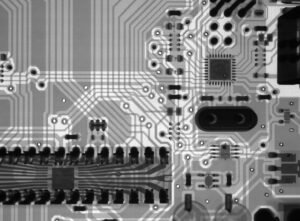Deepfake vs Real
Deepfake technology has rapidly advanced in recent years, allowing for the creation of highly realistic fake videos. With the potential to manipulate and distort reality, deepfakes present numerous challenges and ethical concerns. This article aims to explore the key differences between deepfakes and real videos, and shed light on the implications of this emerging technology.
Key Takeaways:
- Deepfakes utilize artificial intelligence (AI) algorithms to manipulate or replace elements of a video, making it appear authentic.
- Real videos capture genuine events, with minimal post-production alterations.
- Deepfakes are frequently created with malicious intent, while real videos typically serve as documentation or entertainment.
- The increasing sophistication of deepfake technology poses significant threats to privacy, security, and trust.
- Awareness and education are crucial in preventing the harmful consequences of deepfakes.
Understanding Deepfakes and Real Videos
Deepfakes, powered by AI algorithms, have the capability to replicate and generate synthetic media that convincingly impersonates individuals or alters existing footage. These AI-generated videos manipulate facial expressions, body movements, or even speech, giving the impression that the person in the video is saying or doing something they never actually did.
On the other hand, real videos capture authentic events, providing an accurate representation of reality. While post-production editing techniques may be employed to enhance visual quality or adjust minor aspects, real videos aim to document or entertain within the bounds of truth.
Interestingly, deepfakes can be mistaken for real videos by the naked eye, making it increasingly difficult to differentiate between what is genuine and what is manufactured.
The Implications of Deepfake Technology
The rise of deepfakes brings forth several concerns and challenges in various aspects of society. Here are some of the most pressing implications:
- False Information: Deepfakes can be used to spread false information, potentially inciting panic, causing misinformation campaigns, or damaging reputations.
- Privacy Invasion: Individuals can have their identities co-opted and placed into compromising situations through the use of deepfakes.
- Fuel for Disinformation: Deepfakes can be strategically deployed to sway public opinion, influence elections, or propagate conspiracy theories.
- Trust Erosion: The proliferation of deepfakes undermines trust in visual evidence, impacting the legal system, journalism, and everyday interactions.
- Misuse of Personal Data: Deepfake technology relies on vast amounts of data, raising concerns about its collection and misuse.
Comparing Deepfakes and Real Videos
When examining the characteristics of deepfakes and real videos, the differences become evident:
| Deepfakes | Real Videos | |
| Data Source | Based on existing video footage or images, or synthesized content generated by AI algorithms. | Captures real-life events and individuals. |
| Involvement | Intentionally created with malicious intent or for entertainment purposes. | Unintentional capture of genuine events. |
| Manipulation | Artificially alters faces, voices, movements, or actions to create a manufactured reality. | Minimal post-production editing, primarily for enhancement or minor adjustments. |
| Authenticity | Can convincingly imitate reality and be difficult to discern from real videos. | Represents actual events and people, providing an accurate depiction of reality. |
Preventing Deepfake Harm
To mitigate the potential threats posed by deepfakes, a multi-faceted approach is necessary:
- Technological Advancements: The development of advanced detection systems and AI tools can help identify and debunk deepfakes.
- Education and Awareness: Promoting media literacy and educating individuals about the existence and dangers of deepfakes aids in critical evaluation.
- Legislation and Regulation: Governments and technology companies must work together to create policies and regulations that address the risks associated with deepfake technology.
It is essential to stay informed and cautious, as combating the negative impacts of deepfakes requires both individual and collective efforts.

Common Misconceptions
Deepfake technology is always used for malicious purposes
One common misconception about deepfake technology is that it is primarily used for malicious purposes such as spreading fake news or creating pornography. While there have been instances where deepfakes have been used for nefarious intentions, such as manipulating videos to deceive viewers, it is important to note that this technology has potential applications in various fields.
- Deepfakes can be used in the film industry for creating visual effects.
- Deepfake technology can also be applied in healthcare for simulating medical scenarios.
- It can be used for entertainment purposes like impersonating celebrities in a comical way.
All deepfake videos are easy to detect
Another misconception surrounding deepfake technology is the belief that all deepfake videos are easy to detect. While there are certainly techniques and tools being developed to detect deepfakes, the technology itself is continuously evolving, making it more challenging to differentiate between real and fake videos.
- Advanced deepfake algorithms can generate videos that are visually indistinguishable from authentic footage.
- Deepfake detection methods can struggle when dealing with highly realistic and well-crafted deepfakes.
- The rapid advancement of deepfake technology poses a continuous challenge for detection technologies.
Deepfakes are only a recent phenomenon
Many people mistakenly believe that deepfake videos are a recent phenomenon. In reality, the concept of creating synthetic media to manipulate or replace faces has been around for quite some time.
- The first notable deepfake video emerged in 2017, but similar techniques have been used in the film industry for years.
- Deepfakes have a history rooted in computer graphics, with early iterations appearing in academic research.
- The rise of social media platforms and the accessibility of powerful machine learning tools have contributed to the proliferation of deepfakes.
All deepfake videos are harmful or unethical
While some deepfake videos are indeed harmful or unethical, it is a misconception to assume that all deepfakes fall under this category. There are instances where deepfakes have been created for non-harmful purposes or as artistic expressions.
- Deepfakes have been used to raise awareness about political issues and spark discussions.
- Artists have experimented with deepfake technology to create unique and thought-provoking visual content.
- Deepfakes can also be used in educational settings to simulate historical figures or recreate events.
Deepfakes are always made with malicious intent
Contrary to popular belief, not all deepfake videos are created with malicious intent. While there are definite concerns surrounding the potential misuse of deepfake technology, it is important to acknowledge that not all individuals or organizations using this technology have malicious intentions.
- Academic researchers use deepfake technology to advance computer vision and develop improved detection algorithms.
- Deepfakes have been created as a form of satire or for comedic purposes.
- Some organizations use deepfakes for cybersecurity measures, simulating attacks to enhance defenses.

The Rise of Deepfake Technology
Over the past decade, deepfake technology has emerged as a powerful tool that utilizes artificial intelligence to manipulate and alter visual and audio content with startling realism. While this technology has undoubtedly revolutionized various industries, including entertainment and politics, it has also sparked concerns about ethical and privacy issues. In this article, we explore the key differences between deepfake and real content, shedding light on the potential implications of this rapidly evolving technology.
1. Celebrity Deepfake Videos
With the advancement of deepfake technology, celebrities have become more vulnerable to manipulated videos that falsely portray them engaging in controversial or scandalous activities. These deepfake videos can damage reputations and deceive the public, highlighting the need for stricter regulations to combat this issue.
2. Detecting Deepfakes
Efforts are being made to develop advanced deepfake detection algorithms that can help identify fake content. However, as deepfake technology continues to evolve, these detection methods also need to be updated regularly to stay effective.
3. Political Manipulation
Deepfake technology has the potential to introduce significant distortions into political landscapes worldwide. Videos of politicians and leaders saying or doing things that never actually happened can lead to misinformation, undermining public trust and shaking the foundation of democratic systems.
4. Real-Time Deepfakes
The development of real-time deepfake technology is rapidly progressing, enabling the alteration of live video streams. This poses an even greater threat as it becomes more challenging to distinguish between real and fake content in real-time, potentially leading to widespread confusion and manipulation.
5. Security Risks
Deepfake technology also poses an imminent risk to cybersecurity. Deepfake videos can be used to deceive individuals into exposing sensitive information or gain unauthorized access to secure systems. Enhanced security measures should be implemented to protect against such attacks.
6. Manipulation of Audio
While deepfake videos often grab the spotlight, there is a growing concern regarding the manipulation of audio using similar techniques. This extends the potential for deception, as seemingly genuine audio recordings can be falsified, contributing to further misinformation.
7. Deepfake in Entertainment
The entertainment industry has embraced deepfake technology to enhance visual effects and create realistic virtual characters. While this application demonstrates the creative and transformative potential of deepfakes, it also blurs the boundaries between fact and fiction.
8. Deepfake and Identity Theft
Deepfake technology can be exploited for identity theft purposes, as it allows for the creation of realistic videos or images that falsely represent an individual. This raises serious concerns about privacy and the authenticity of digital identities.
9. Educational Applications
Deepfake technology has shown promise in the field of education, allowing historical figures, artists, or scientists to be brought back to life in teaching materials. However, critical discussions about its ethical use and potential misrepresentations must accompany its integration into the education system.
10. Strengthening Legal Frameworks
As deepfake technology continues to advance, the need for robust legal frameworks becomes increasingly apparent. Legislation should be established to address the misuse of deepfakes, establish guidelines for detection and prevention, and protect individuals’ rights to privacy and accurate representation.
Conclusion
Deepfake technology presents a double-edged sword, capable of both innovation and manipulation. While it offers vast possibilities for creative expression and immersive experiences, its potential negative consequences cannot be ignored. Striking a balance between harnessing the benefits of deepfakes and safeguarding against their misuse is crucial for a sustainable future.
Frequently Asked Questions
What are deepfakes and how are they created?
A deepfake refers to a synthetic media, typically a video or image, that has been manipulated or altered using deep learning techniques. Deepfakes are created using artificial intelligence algorithms, specifically deep neural networks, that analyze and learn from existing video footage or images of a target person. These algorithms then generate new content that convincingly replaces the original person’s appearance, creating a highly realistic but falsified representation.
How can deepfakes be distinguished from real videos or images?
Distinguishing deepfakes from real videos or images can be challenging, as the level of sophistication in creating deepfakes has increased over time. However, there are certain telltale signs that can help in identifying deepfakes. These include facial inconsistencies, unnatural movements, distortions, or artifacts, and mismatched lighting or shadows. Some deepfake detection tools also leverage AI algorithms to analyze these visual cues and identify potential manipulation.
What are the potential consequences of deepfakes?
Deepfakes pose various potential consequences. They can be used for misleading propaganda, disinformation campaigns, and fraud. Deepfakes can be utilized to create fake news or malicious hoaxes, damage someone’s reputation, or even manipulate public opinion. Additionally, deepfake technology can be misused for non-consensual pornography or harassment, raising concerns related to privacy and consent.
Are there any legitimate uses for deepfake technology?
While deepfakes have predominantly been associated with negative implications, there are also some potential legitimate uses. Deepfake technology can be utilized in the entertainment industry for special effects, enhancing CGI, or creating lifelike digital avatars of actors. It can also have applications in education and research, allowing historical figures or renowned scientists to be visually recreated in interactive formats.
Are there laws or regulations in place to address deepfakes?
Many countries have started to adopt or propose laws and regulations to address the challenges posed by deepfakes. These usually focus on issues related to privacy, defamation, fraud, or non-consensual use of deepfakes. However, as deepfake technology evolves rapidly, lawmakers are faced with the challenge of keeping up with its advancements and designing effective legal frameworks to mitigate potential harm.
How can individuals protect themselves against deepfakes?
Individuals can take a few precautionary measures to protect themselves against deepfakes. These include being cautious of sharing personal information or sensitive media online, verifying the authenticity of media before believing or sharing it, and educating oneself about the existence and potential risks of deepfakes. Additionally, staying informed about available deepfake detection technologies can help in identifying potential manipulations.
What should social media platforms and tech companies do to combat deepfakes?
Social media platforms and tech companies play a crucial role in combating deepfakes. They can invest in developing advanced detection systems to identify and remove deepfake content. Additionally, implementing stricter content moderation policies and community guidelines can help in reducing the spread of deepfakes. Collaborating with research institutions and sharing insights or datasets can also contribute to the development of more effective detection tools.
Can AI and machine learning help in detecting deepfakes?
Yes, AI and machine learning can be powerful tools in detecting deepfakes. Researchers and developers are actively working on developing sophisticated algorithms that can analyze various visual cues, such as facial movements, consistency, and minute details, to detect potential deepfake manipulations. These algorithms can learn from a large dataset of both real and manipulated videos or images to improve their detection abilities.
Will technology advancements make deepfake detection obsolete?
As deepfake technology evolves, it is likely that new techniques and countermeasures will be developed. However, it is an ongoing battle between deepfake creators and detection algorithms. While advancements in deepfake technology may make detection more challenging, researchers and experts in the field of AI and computer vision will continue to innovate and develop new strategies to counteract these manipulations.




